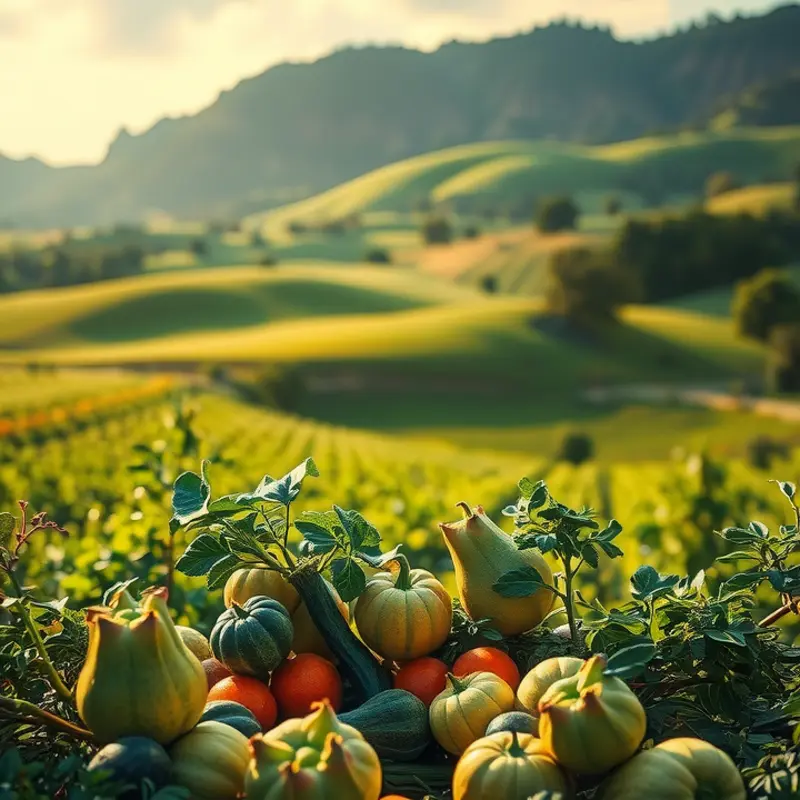Salad greens are a nutritious staple in many households. However, they often go unused and spoil before we can enjoy them. Learning to store these delicate vegetables effectively can lead to fresher salads, less food waste, and improved meal planning. This guide provides straightforward strategies to keep your greens crisp and flavorful, empowering you to manage your food better at home.
Mastering the Storage Techniques

Understanding how to properly store salad greens can significantly extend their shelf life. Here are some essential tips to keep in mind: selecting the right container, managing moisture, regulating temperature, and avoiding ethylene exposure are key.
Choosing the Right Container
Breathability in storage is crucial for preventing salad greens from turning soggy and spoiling. Containers or bags that allow some air circulation are ideal. Plastic wrap can trap moisture, creating an environment conducive to mold growth. When considering storage options, look for containers with vents or use bags that can be loosely closed to encourage airflow.
Washing and Drying
Washing salad greens should ideally happen just before consumption. Washing them too early can shorten their lifespan as moisture accelerates decay. If washing in advance is necessary, thorough drying is essential. Use a salad spinner to remove excess water effectively. Alternatively, gently pat the greens dry with paper towels to prevent water from lingering on the leaves, which can cause wilting.
Temperature Control
The crisper drawer in your refrigerator is designed to support the ideal conditions for vegetables and greens. Set this drawer’s temperature between 32°F and 36°F (0°C to 2°C) to best maintain freshness. Any warmer, and the greens may wilt; any colder, and risk of freezing arises, damaging the cell structure and texture of the leaves.
Use Paper Towels
Incorporating a dry paper towel in your greens’ storage container can dramatically increase their lifespan. The paper towel works to absorb unwanted moisture, which otherwise creates an environment where decay thrives. Regularly replacing the paper towel as it becomes damp is essential for maximizing its effectiveness.
Avoid Ethylene-Producing Fruits
Ethylene gas is a natural hormone in some fruits like apples and bananas. It promotes ripening, which is beneficial for fruits but problematic for leafy greens. Storing these fruits separately from salad greens will reduce the unintended exposure to ethylene, thereby preventing premature decay. You can learn more about smart storage and waste reduction techniques at Eco-Smart Kitchen Storage.
Incorporating these practices into your routine will significantly extend the shelf life of your salad greens. By understanding and implementing these tips, we can contribute to reducing food waste, saving both money and resources while enjoying fresh, crisp salads longer.
Recognizing Signs of Freshness and Spoilage

To effectively manage your salad greens, knowing how to identify freshness and signs of spoilage is essential. Watch for these clues to ensure your greens stay crisp and delightful.
Visual Signs: Fresh greens convey an inviting vibrancy. Leafy greens, such as spinach and lettuce, in their prime will boast bright and uniform colors. If your greens are streaked with yellow or brown, or bear unsightly slimy patches, such signs usually indicate spoilage. Such visible changes often suggest that the nutrients have deteriorated, and the greens may no longer be suitable for consumption.
Texture Check: The texture of your greens acts as an immediate indicator of their freshness. Freshness bestows a natural crispness and firmness to the leaves. When your greens begin to wilt or feel limp upon handling, it might be time to consider using them quickly or discarding them if they’ve lost their appeal. Identifying the right texture not only tells you about freshness but also influences your decision on preparing vibrant salads or dishes.
Smell Test: Trusting your sense of smell can be particularly reliable in recognizing spoilage. Fresh greens carry a neutral or subtly pleasant fragrance. However, when greens emit a strong, sour, or unpleasant odor, it’s a definitive sign of spoilage. This change in aroma results from the breakdown of compounds within the leaves, indicating that they are unfit for consumption.
Regular Inspection: Incorporate regular inspections into your kitchen routine, especially if you aim to reduce food waste and keep your produce usable. Routinely examining your greens ensures that you catch any early signs of spoilage before they spread. Remove any affected leaves immediately to prevent the decomposition from affecting the entire batch. This proactive approach extends the life of your greens and minimizes waste.
These techniques aren’t confined to salad greens alone. Applying similar strategies to all fresh produce can significantly contribute to maintaining a healthier kitchen environment and reducing overall food waste. Additionally, for insights on safe storage to minimize wastage, check out this guide on eco-smart kitchen storage, which includes eco-friendly methods for storing various types of produce.
Mastering the art of recognizing freshness and spoilage helps in maintaining the nutritional quality of your greens. In conjunction with proper storage methods, these practices form the foundation of a sustainable approach to consuming fruits and vegetables.
Final words
Managing salad greens effectively not only ensures that they last longer but also contributes to reducing food waste in your home. Implementing the tips outlined above can lead to fresher salads and a more sustainable kitchen. Invest the time in proper storage techniques and become familiar with the signs of spoilage for the best results. You’re taking a step towards not only enhancing your meals but also making a positive impact on the environment. Enjoy crispy, vibrant greens in every dish, and let your kitchen flourish with freshness!







